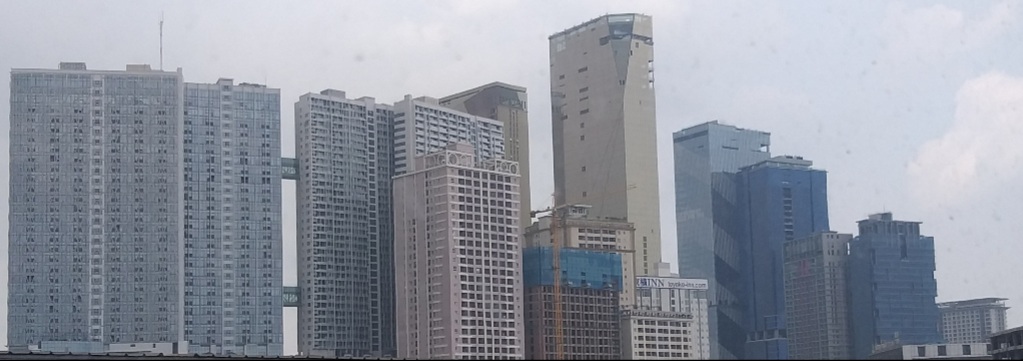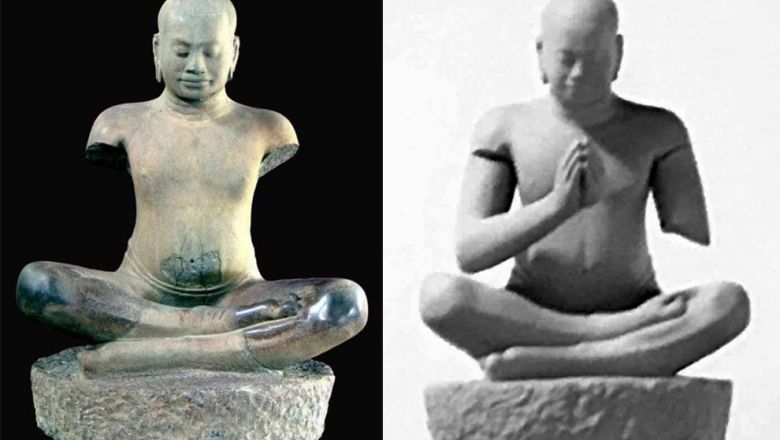|
Bon Om Touk
(The Royal Boat Racing Festival, Lanterns Floating, Taste the Ambok and Worship the Moon) , nickname = ''Cambodian Water Festival'' , observedby = Cambodians , litcolor = , longtype = , significance = Marks the Cambodian Water Festival , begins = , ends = , date = , date2019 = 10–11–12 November , date2020 = 30–31–01 October & November , date2021 = 18–19–20 November , date2022 = 7–8–9 November , date2023 = 26–27–28 November , frequency = annual , duration = 3 days , celebrations = , observances = , relatedto = Loy Krathong (in Thailand and Laos), Il Poya (in Sri Lanka) Tazaungdaing festival (in Myanmar), Boita Bandana (in Odisha, India) Bon Om Touk ( km, បុណ្យអុំទូក, , lit. "Boat Racing Festival"), also known as the Cambodian Water Festival, is celebrated in late October or early November, often corresponding with the lunar Mid-Au ... [...More Info...] [...Related Items...] OR: [Wikipedia] [Google] [Baidu] |
Cambodia Water Festival 1914
Cambodia (; also Kampuchea ; km, កម្ពុជា, UNGEGN: ), officially the Kingdom of Cambodia, is a country located in the southern portion of the Indochinese Peninsula in Southeast Asia, spanning an area of , bordered by Thailand to the northwest, Laos to the north, Vietnam to the east, and the Gulf of Thailand to the southwest. The capital and largest city is Phnom Penh. The sovereign state of Cambodia has a population of over 17 million. Buddhism is enshrined in the constitution as the official state religion, and is practised by more than 97% of the population. Cambodia's minority groups include Vietnamese, Chinese, Chams and 30 hill tribes. Cambodia has a tropical monsoon climate of two seasons, and the country is made up of a central floodplain around the Tonlé Sap lake and Mekong Delta, surrounded by mountainous regions. The capital and largest city is Phnom Penh, the political, economic and cultural centre of Cambodia. The kingdom is an elective constit ... [...More Info...] [...Related Items...] OR: [Wikipedia] [Google] [Baidu] |
Phnom Penh
Phnom Penh (; km, ភ្នំពេញ, ) is the capital and most populous city of Cambodia. It has been the national capital since the French protectorate of Cambodia and has grown to become the nation's primate city and its economic, industrial, and cultural centre. Phnom Penh succeeded Angkor Thom as the capital of the Khmer nation but was abandoned several times before being reestablished in 1865 by King Norodom. The city formerly functioned as a processing center, with textiles, pharmaceuticals, machine manufacturing, and rice milling. Its chief assets, however, were cultural. Institutions of higher learning included the Royal University of Phnom Penh (established in 1960 as Royal Khmer University), with schools of engineering, fine arts, technology, and agricultural sciences, the latter at Chamkar Daung, a suburb. Also located in Phnom Penh were the Royal University of Agronomic Sciences and the Agricultural School of Prek Leap. The city was nicknamed the "Pearl of ... [...More Info...] [...Related Items...] OR: [Wikipedia] [Google] [Baidu] |
Goddess Ganga In Cambodia Art
A goddess is a female deity. In many known cultures, goddesses are often linked with literal or metaphorical pregnancy or imagined feminine roles associated with how women and girls are perceived or expected to behave. This includes themes of spinning, weaving, beauty, love, sexuality, motherhood, domesticity, creativity, and fertility (exemplified by the ancient mother goddess cult). Many major goddesses are also associated with magic, war, strategy, hunting, farming, wisdom, fate, earth, sky, power, laws, justice, and more. Some themes, such as discord or disease, which are considered negative within their cultural contexts also are found associated with some goddesses. There are as many differently described and understood goddesses as there are male, shapeshifting, or neuter gods. In some faiths, a sacred female figure holds a central place in religious prayer and worship. For example, Shaktism, the worship of the female force that animates the world, is one of the three maj ... [...More Info...] [...Related Items...] OR: [Wikipedia] [Google] [Baidu] |
Khleangs
The Khleangs are two buildings of unknown purpose on the east side of the Royal Square in Angkor Thom, Cambodia, located just behind the twelve towers of Prasat Suor Prat and separated by the royal route that leads from the Angkor Thom Royal Palace to the Victory Gate. They are oriented along the north-south axis. The two were not built at the same time—the northern building (North Khleang) was built under King Jayaviravarman and the southern (South Khleang) under his successor Suryavarman IHigham, C., 2014, Early Mainland Southeast Asia, Bangkok: River Books Co., Ltd., —but they are of similar design (although South Khleang is slight narrower). They have given their name to the Khleang style, which is characterised by relatively simple lintels with a central kala. Other buildings in the style are Phimeanakas and Ta Keo. Rectangular sandstone buildings set opposite the Elephants Terrace, behind the Prasat Suor Prat. ‘Khleang’ means ‘storeroom’ but it is unlikely that ... [...More Info...] [...Related Items...] OR: [Wikipedia] [Google] [Baidu] |
Champa
Champa ( Cham: ꨌꩌꨛꨩ; km, ចាម្ប៉ា; vi, Chiêm Thành or ) were a collection of independent Cham polities that extended across the coast of what is contemporary central and southern Vietnam from approximately the 2nd century AD until 1832, when it was annexed by the Vietnamese Empire under its emperor Minh Mạng. The kingdom was known variously as ''Nagaracampa'' ( sa, नगरचम्पः), ''Champa'' (ꨌꩌꨛꨩ) in modern Cham, and ''Châmpa'' () in the Khmer inscriptions, ''Chiêm Thành'' in Vietnamese and ''Zhànchéng'' (Mandarin: 占城) in Chinese records. The Kingdoms of Champa and the Chams contribute profound and direct impacts to the history of Vietnam, Southeast Asia, as well as their present day. Early Champa, evolved from local seafaring Austronesian Chamic Sa Huỳnh culture off the coast of modern-day Vietnam. The emergence of Champa at the late 2nd century AD shows testimony of early Southeast Asian statecrafting and ... [...More Info...] [...Related Items...] OR: [Wikipedia] [Google] [Baidu] |
Chams
The Cham ( Cham: ''Čaṃ'') or Champa people ( Cham: , ''Urang Campa''; vi, Người Chăm or ; km, ជនជាតិចាម, ) are an Austronesian ethnic group. From the 2nd century to 1832 the Cham populated Champa, a contiguous territory of independent principalities in central and southern Vietnam. They spoke the Cham language and the Tsat language (the former is still spoken by the Cham, and the latter is spoken by their Utsul descendants, on China’s Hainan Island), two Chamic languages from the Malayo-Polynesian group of the Austronesian family. Chams and Malays are the only sizable Austronesian peoples that settled in Iron Age mainland Southeast Asia among the more ancient Austroasiatic inhabitants. History For a long time, researchers believed that the Chams had arrived by sea in the first millennium BC from Sumatra, Borneo and the Malay Peninsula, eventually settling in central modern Vietnam. The original Cham are therefore the likely heirs of Aus ... [...More Info...] [...Related Items...] OR: [Wikipedia] [Google] [Baidu] |
Jayavarman VII
Jayavarman VII, posthumous name of Mahaparamasaugata ( km, ជ័យវរ្ម័នទី៧, c. 1122–1218), was king of the Khmer Empire. He was the son of King Dharanindravarman II (r. 1150–1160) and Queen Sri Jayarajacudamani. He was the first king devoted to Buddhism, as only one prior Khmer king was a Buddhist. He then built the Bayon as a monument to Buddhism. Jayavarman VII is generally considered the most powerful of the Khmer monarchs by historians. His government built many projects including hospitals, highways, rest houses and temples. With Buddhism as his motivation, King Jayavarman VII is credited with introducing a welfare state that served the physical and spiritual needs of the Khmer people. Defeat of the Cham and coronation In 1177 and again in 1178, the Cham invaded the Khmer Empire. In 1177, Champa King Jaya Indravarman IV launched a surprise attack on the Khmer capital by sailing a fleet up the Mekong River, across Lake Tonlé Sap, and t ... [...More Info...] [...Related Items...] OR: [Wikipedia] [Google] [Baidu] |
2016 Angkor, Angkor Thom, Bajon (09)
Sixteen or 16 may refer to: *16 (number), the natural number following 15 and preceding 17 *one of the years 16 BC, AD 16, 1916, 2016 Films * ''Pathinaaru'' or ''Sixteen'', a 2010 Tamil film * ''Sixteen'' (1943 film), a 1943 Argentine film directed by Carlos Hugo Christensen * ''Sixteen'' (2013 Indian film), a 2013 Hindi film * ''Sixteen'' (2013 British film), a 2013 British film by director Rob Brown Music * The Sixteen, an English choir *16 (band), a sludge metal band *Sixteen (Polish band), a Polish band Albums * ''16'' (Robin album), a 2014 album by Robin * 16 (Madhouse album), a 1987 album by Madhouse * ''Sixteen'' (album), a 1983 album by Stacy Lattisaw *''Sixteen'' , a 2005 album by Shook Ones * ''16'', a 2020 album by Wejdene Songs * "16" (Sneaky Sound System song), 2009 * "Sixteen" (Thomas Rhett song), 2017 * "Sixteen" (Ellie Goulding song), 2019 *"16", by Craig David from '' Following My Intuition'', 2016 *"16", by Green Day from ''39/Smooth'', 1990 *"16", by H ... [...More Info...] [...Related Items...] OR: [Wikipedia] [Google] [Baidu] |
Sediment
Sediment is a naturally occurring material that is broken down by processes of weathering and erosion, and is subsequently transported by the action of wind, water, or ice or by the force of gravity acting on the particles. For example, sand and silt can be carried in suspension in river water and on reaching the sea bed deposited by sedimentation; if buried, they may eventually become sandstone and siltstone (sedimentary rocks) through lithification. Sediments are most often transported by water ( fluvial processes), but also wind ( aeolian processes) and glaciers. Beach sands and river channel deposits are examples of fluvial transport and deposition, though sediment also often settles out of slow-moving or standing water in lakes and oceans. Desert sand dunes and loess are examples of aeolian transport and deposition. Glacial moraine deposits and till are ice-transported sediments. Classification Sediment can be classified based on its grain size, grain sh ... [...More Info...] [...Related Items...] OR: [Wikipedia] [Google] [Baidu] |
Khmer Language
Khmer (; , ) is an Austroasiatic language spoken by the Khmer people, and the official and national language of Cambodia. Khmer has been influenced considerably by Sanskrit and Pali, especially in the royal and religious registers, through Hinduism and Buddhism. It is also the earliest recorded and earliest written language of the Mon–Khmer family, predating Mon and Vietnamese, due to Old Khmer being the language of the historical empires of Chenla, Angkor and, presumably, their earlier predecessor state, Funan. The vast majority of Khmer speakers speak Central Khmer, the dialect of the central plain where the Khmer are most heavily concentrated. Within Cambodia, regional accents exist in remote areas but these are regarded as varieties of Central Khmer. Two exceptions are the speech of the capital, Phnom Penh, and that of the Khmer Khe in Stung Treng province, both of which differ sufficiently enough from Central Khmer to be considered separate dialects of Khmer. ... [...More Info...] [...Related Items...] OR: [Wikipedia] [Google] [Baidu] |






